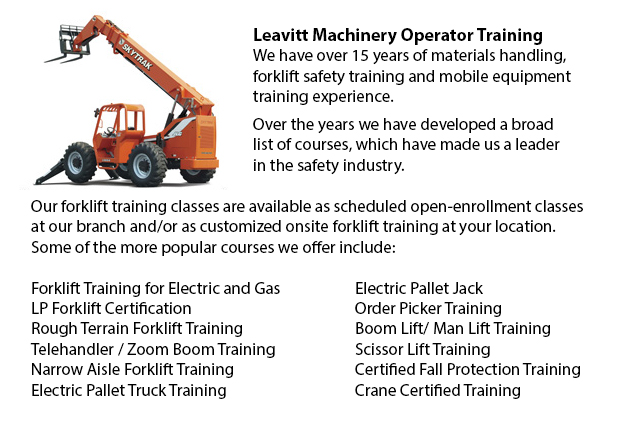
Coquitlam Telehandler License - The telehandler or telescopic handler is a generally used machine in industrial and agricultural applications. This equipment is the same in look to a forklift and also functions in a similar way, even if telehandlers are much more like a crane than forklift. It has a telescopic boom that can lengthen upward and forwards from the motor vehicle. The boom has the capability to fit one of various attachments like for example a lift table, muck grab, pallet forks or a bucket.
The most common telehandler accessories are pallet tines. The telehandler is utilized to move goods in sites where the loads cannot be transported by a traditional lift truck. Telehandlers are particularly helpful for placing loads on rooftops for example, or for removing palletized cargo from with a trailer. Many of the tasks which a telehandler can complete will otherwise need a crane and this machine can be costly, not always time efficient and not practical.
The boom acts as a lever, raising and extending while bearing a load. Though there are rear counterweights, this might cause the telehandler to become more unstable. Therefore, the greatest advantage of the telehandler is likewise its greatest limitation. As the working radius increases, the lifting capacity lessens. The working radius is defined as the distance between the front of the wheels and the center of the load.
Like for example, a telehandler with a 5000 lb capacity with the boom retracted can safely lift as little as 400 lb as soon as it is completely extended at a low boom angle. The equivalent machine which has a 5000 lb lift capacity and the boom retracted could support up to 10,000 lb with the boom raised to 70 degrees. The operator has a load chart to help determine whether a specific lifting task can be completed in an efficient and safe manner. This chart takes into consideration the height, the boom angle and the weight.
Lots of telehandlers come outfitted along with a computer which utilizes sensors so as to monitor the motor vehicle. These sensors would warn the operator and some are capable of cutting off further control input if the limits of the vehicle are exceeded. Some telehandler types are also equipped along with front outriggers that are referred to as mobile cranes. These significantly extend the lifting capability of the equipment while it is stationary.
-
Coquitlam Crane Certification
Coquitlam Crane Certification - The Crane Certification training program consists of subject matter recommended by industry concerning the safe and efficient operation of cranes. Trainees will be taught the following: how to identify cranes and their... More -
Coquitlam Crane Training Courses
Coquitlam Crane Training Courses - A crane is a kind of equipment designed to move, lift and lower heavy stuff. A crane is usually equipped with a hoist, sheaves, and chains or wire ropes. Cranes are used in the manufacturing, construction and transp... More -
Coquitlam Boom Lift Safety Training
Coquitlam Boom Lift Safey Training - Boom lifts are a kind of elevated work platform or aerial lifting device which are usually used in industry, warehousing and construction. Boom lifts can be utilized in virtually any setting due to their versatili... More -
Coquitlam Boom Lift Training
Coquitlam Boom Lift Training - Aerial platforms or also known as elevated work platforms are devices which allow workers to carry out duties and tasks at elevated heights that would not be otherwise reachable. There are different aerial lifts availab... More -
Coquitlam Forklift Certification Schools
Coquitlam Forklift Certification Schools - Forklift Certification is mandatory within North America. Hence, forklift training programs are important both for businesses and for people looking for jobs in industries as operators of forklifts. Forklift... More -
Coquitlam Wheel Loader Training
Coquitlam Wheel Loader Training - Normally, the different types of heavy equipment training are divided into 2 categories of equipment: those that have rubber tires and tracked vehicles. Tracked vehicles include items like for instance bulldozers, ex... More -
Coquitlam Heavy Equipment Training Schools
Coquitlam Heavy Equipment Training Schools - There are a lot of heavy equipment training schools to choose from. If you would like to get to the best, it is important to examine several factors of the school to be able to determine the level of educa... More -
Coquitlam Telehandler Training Courses
Coquitlam Telehandler Training Courses - Employers are responsible for making sure that their supervisory and operating personnel are trained to work proficiently making use of telehandler equipment. The skill level of workers should be assessed. If... More

Forklift Certification Coquitlam
TOLL FREE: 1-888-254-6157
Coquitlam, British Columbia
forkliftcertificationcoquitlam.com
Email Us
About Us


